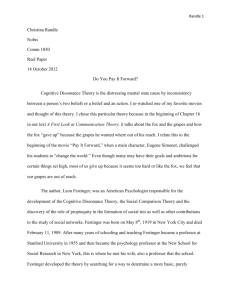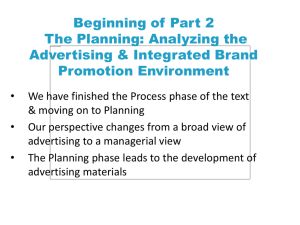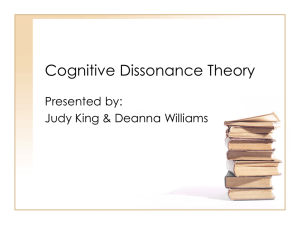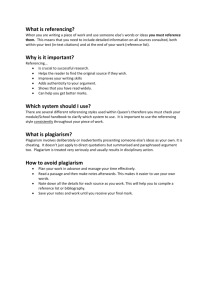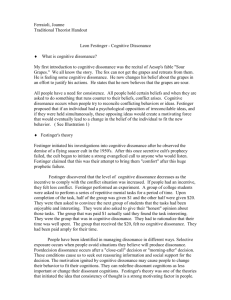Leon Festinger (1957) proposed the theory of cognitive dissonance
advertisement
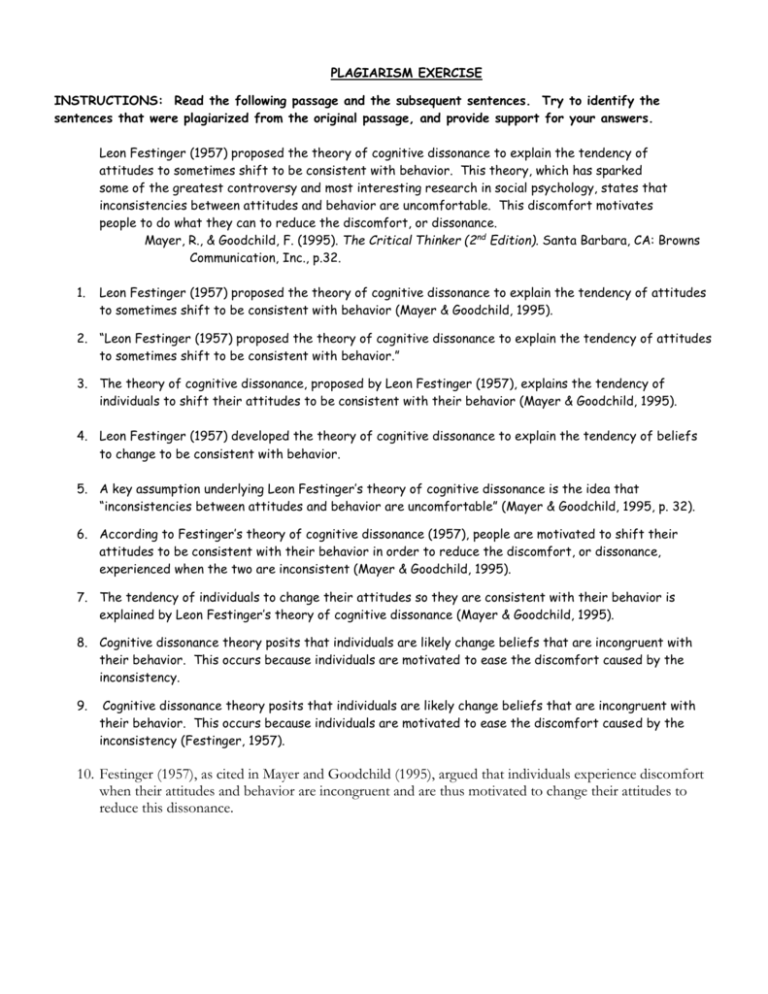
PLAGIARISM EXERCISE INSTRUCTIONS: Read the following passage and the subsequent sentences. Try to identify the sentences that were plagiarized from the original passage, and provide support for your answers. Leon Festinger (1957) proposed the theory of cognitive dissonance to explain the tendency of attitudes to sometimes shift to be consistent with behavior. This theory, which has sparked some of the greatest controversy and most interesting research in social psychology, states that inconsistencies between attitudes and behavior are uncomfortable. This discomfort motivates people to do what they can to reduce the discomfort, or dissonance. Mayer, R., & Goodchild, F. (1995). The Critical Thinker (2nd Edition). Santa Barbara, CA: Browns Communication, Inc., p.32. 1. Leon Festinger (1957) proposed the theory of cognitive dissonance to explain the tendency of attitudes to sometimes shift to be consistent with behavior (Mayer & Goodchild, 1995). 2. “Leon Festinger (1957) proposed the theory of cognitive dissonance to explain the tendency of attitudes to sometimes shift to be consistent with behavior.” 3. The theory of cognitive dissonance, proposed by Leon Festinger (1957), explains the tendency of individuals to shift their attitudes to be consistent with their behavior (Mayer & Goodchild, 1995). 4. Leon Festinger (1957) developed the theory of cognitive dissonance to explain the tendency of beliefs to change to be consistent with behavior. 5. A key assumption underlying Leon Festinger’s theory of cognitive dissonance is the idea that “inconsistencies between attitudes and behavior are uncomfortable” (Mayer & Goodchild, 1995, p. 32). 6. According to Festinger’s theory of cognitive dissonance (1957), people are motivated to shift their attitudes to be consistent with their behavior in order to reduce the discomfort, or dissonance, experienced when the two are inconsistent (Mayer & Goodchild, 1995). 7. The tendency of individuals to change their attitudes so they are consistent with their behavior is explained by Leon Festinger’s theory of cognitive dissonance (Mayer & Goodchild, 1995). 8. Cognitive dissonance theory posits that individuals are likely change beliefs that are incongruent with their behavior. This occurs because individuals are motivated to ease the discomfort caused by the inconsistency. 9. Cognitive dissonance theory posits that individuals are likely change beliefs that are incongruent with their behavior. This occurs because individuals are motivated to ease the discomfort caused by the inconsistency (Festinger, 1957). 10. Festinger (1957), as cited in Mayer and Goodchild (1995), argued that individuals experience discomfort when their attitudes and behavior are incongruent and are thus motivated to change their attitudes to reduce this dissonance.

